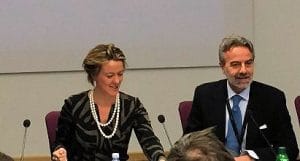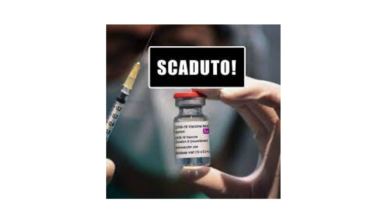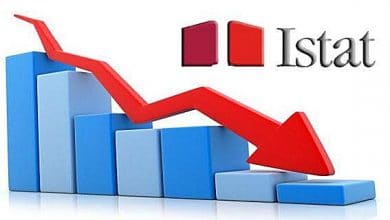
The analysis of the OsMed data allows us to still find important pockets of inappropriateness in the use of drugs for the treatment of ulcers and oesophagitis, but also in the use of antidiabetics. As far as adherence to pharmacological treatments is concerned, ample room for improvement concerns both antidepressants and drugs for obstructive respiratory tract disorders.
(AGI) - Rome, Jan. 26 – In the first nine months of 2014, Italians purchased a total of 1,398 million packs of medicines (reimbursability class A and C), for an average of about 23 packs per person (of which 14 under the agreed assistance regime), without changes compared to the nine months of the previous year. This is what we read in the Osmed report edited by Aifa and presented today in Rome.
In terms of consumption in the conventional dispensing regime, in the same period of time 1,035.9 daily doses were prescribed for every thousand inhabitants, a substantially unchanged value compared to the previous year. As regards the consumption of medicines at the regional level, a greater use of medicines is confirmed in the Centre-South, with Lazio in first place for average daily doses per thousand inhabitants (1,184.2 DDD/1000), followed by Calabria, Puglia and Sardinia, while the lowest consumption was recorded in the autonomous province of Bolzano (764.6 average daily doses per 1,000 inhabitants), in Liguria, Veneto and Lombardy. Sicily is the region that has reduced consumption the most compared to the same period of 2013 (-3.6%). Drugs for the cardiovascular system are confirmed in first place in terms of consumption, but, for the first time, they are preceded in terms of public expenditure by antineoplastic and immunomodulatory drugs. ACE inhibitors are the most prescribed in the conventional assistance regimen, followed by sartans and statins. The second most prescribed category remains that of gastrointestinal tract and metabolism drugs. Acid pump inhibitors are firmly confirmed in first place for quantities prescribed and expenditure. Among antidiabetics, the supply by public facilities increases and that of conventional assistance decreases for dipeptidyl-peptidase 4 inhibitors, long-acting insulins and biguanides and sulfonamides in combination. Medicines for blood and hematopoietic organs rank third for prescription and fifth for overall expenditure. Antiplatelet agents are the most prescribed in the distribution through pharmacies, followed by folic acid and derivatives. Heparins are in first place in terms of expense.
Antiplatelet agents, excluding heparin, are the most used and blood products the category with the highest expenditure in public health facilities. Central nervous system drugs rank fourth by prescription; under conventional assistance, antidepressants are the most used category, first of all the selective serotonin reuptake inhibitors (SSRIs); the other antiepileptics become the first category for agreed expenditure. Among centrally acting painkillers, there are increases in the consumption of the natural alkaloids of opium and other opioids. “The data relating to the use of medicines in Italy in the first nine months of 2014 confirm the constant, albeit limited, growth in consumption and total pharmaceutical expenditure”, affirms the director general of AIFA, Luca Pani. “Italians – he adds – bought on average, between January and September of last year, 23 packs of medicines and the most used medicines were, once again, those for the cardiovascular system. Public spending, on the other hand, sees antineoplastic and immunomodulators in first place. Against the reduction in agreed expenditure (-2.2%), we are witnessing the growth of the citizen's sharing and an increase in expenditure for medicines purchased by public health facilities (+5.6%).
The analysis of the OsMed data allows us to still find important pockets of inappropriateness in the use of drugs for the treatment of ulcers and oesophagitis, but also in the use of antidiabetics. As far as adherence to pharmacological treatments is concerned, ample room for improvement concerns both antidepressants and drugs for obstructive respiratory tract disorders.
Almost all the Regions have reduced the agreed spending and Sicily is the Region that has most reduced consumption (-3.6%) and per capita expenditure (-12.0%)”. (AGI) .
AIFA: The use of drugs in Italy - OsMed report (January - September 2014)
Number of pages: 40
Date: January 2015
 The present Relationship aims to offer a description of the use of medicines at national and regional level, during the first nine months of 2014. The scenario offered derives from the reading of the information collected through the various information flows, allowing the recomposition of consumption and pharmaceutical assistance in Italy. In particular, this Report, in addition to analyzing the data relating to the medicines dispensed under contracted assistance, presents the data relating to the medicines used by patients in the face of their dispensing in direct distribution and on behalf, or in the specific context of hospital assistance ; a specific study is dedicated to the analysis of the purchase of medicines by public health structures (ASL, hospitals, university polyclinics, etc.). The methodological note will assist the reader in interpreting the results, as well as providing the necessary technical details.
The present Relationship aims to offer a description of the use of medicines at national and regional level, during the first nine months of 2014. The scenario offered derives from the reading of the information collected through the various information flows, allowing the recomposition of consumption and pharmaceutical assistance in Italy. In particular, this Report, in addition to analyzing the data relating to the medicines dispensed under contracted assistance, presents the data relating to the medicines used by patients in the face of their dispensing in direct distribution and on behalf, or in the specific context of hospital assistance ; a specific study is dedicated to the analysis of the purchase of medicines by public health structures (ASL, hospitals, university polyclinics, etc.). The methodological note will assist the reader in interpreting the results, as well as providing the necessary technical details.
OsMed Report (January – September 2014)
AIFA. Use of drugs in Italy: an overview of levels of appropriateness by therapeutic area
OsMed report January-September 2014, extract pag. 43, Table 12.
Expenditure and consumption under class A-SSN approved assistance regime of expired patent drugs included in the AIFA transparency lists*: comparison between the first 9 months of 2014 and 2013
Italy
Total consumption
DDD//1,000 inh. Die: 1.035,9
Δ%: 0.0
You use expired patent medicines
DDD/1,000 in ab day: 728,9
% on total DDD: 70,4
Δ% 14/13: 11,9
Gross expenditure on expired patent drugs
€ per capita: 69,2
% on the total expenditure: 51,1
Δ% 14/13: 6,6
% Equivalent expenditure**: 28,8
*The analysis was performed using the transparency lists published monthly by AIFA
** Calculated on the total expense for expired patent medicines. Equivalent drugs are medicines based on active ingredients with an expired patent, with the exception of those that have enjoyed patent coverage, pursuant to art. 1 bis, dated Legislative Decree 27 May 2005, n. 87, converted, with modifications, from Law 26 July 2005, n. 149.
Related news: Fedefarma. Pharmaceutical expenditure data January-September 2014






